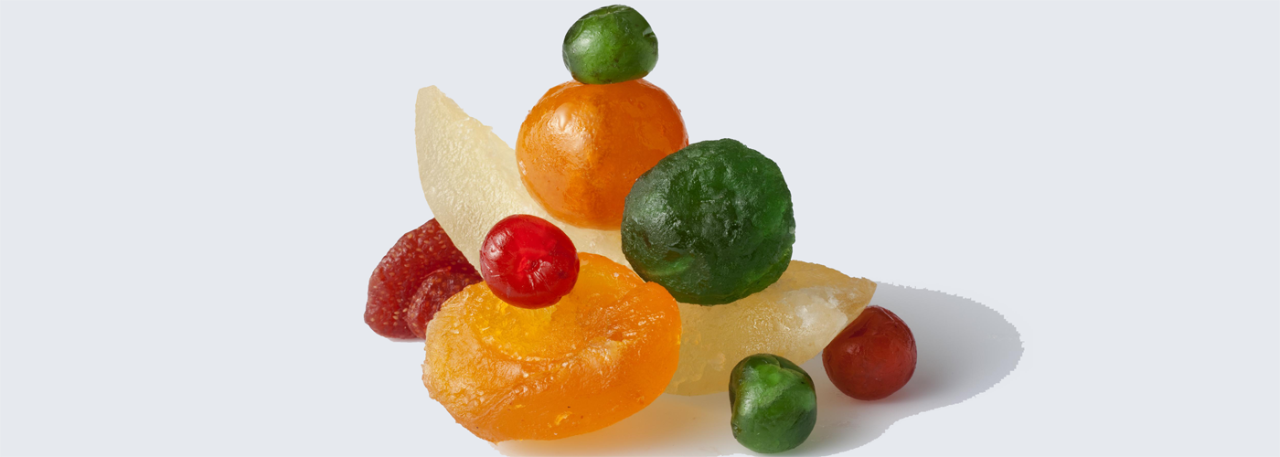.png.transform/rendition-xs/image_image%20(1).png)
Candied fruits
Candied fruits are the result of a process involving various fresh fruits which are transformed into a syrupy sweet by means of the addition of sugar.
They are also known as “crystallized fruits” or “glacé fruits”. They are used in cake-making, breadmaking and can also be eaten directly. Some of the most frequently used fruits are peaches, apricots, apples, pears, citrus fruits, dates, cherries, pineapples and figs.
Tasting notes
Mainly sweet with fruity aromas.
Other notes
The fruit retains its original color although it is usually possible to see through the translucent layer of sugar coating, which gives these sweets a shiny appearance.
Production / Processing method
Basically, candied fruit is obtained by cooking certain fresh fruits in syrup (water and sugar) for various days so that they take on a soft consistency and a typically sweet flavor and can also be conserved for long periods of time. The process involves successive stages of boiling and lengthy soaking in syrups with increasing concentrations of sugar, ranging from 30% to 75%, so that the sugar in the syrup penetrates deeply into the flesh of the fruits.
The crystallizing process is as follows:
- The fruits are washed and peeled, the seeds and cores are removed, and they are washed once again in drinking water.
- The fruit is chopped into small pieces.
- The drained fruit is placed in a container with enough water to cover the fruit. It is then simmered for three minutes.
- Immediately after cooking, the fruit is drained and quickly cooled with water to avoid losing its shape.
- Crystallizing: this operation consists of immersing the flesh of the fruit in syrups with ever stronger concentrations so that the sugar in the solution penetrates inside the fruit tissues to give a product with a glassy appearance and a long conservation period. This is achieved by successively submerging the fruit for a extended lengths of time in a syrup which is then reused at increasingly greater concentrations (30% to 75% approximately).
- After a final soaking the fruit is well drained in colanders.
- Hot water at a temperature of 60°C / 140ºF is used to eliminate the honey from the fruit surface. The process must be done with a light touch. The product is then drained.
- The candied fruit is placed on a thin mesh and covered with a very fine muslin-type cloth to avoid contamination by insects and dust. It is then exposed to sunlight in a dry well-aired place for one or two days.
In the case of Frutas de Aragón they are then coated in chocolate.
Candied fruit is obtained by cooking certain fresh fruits in syrup for various days.

